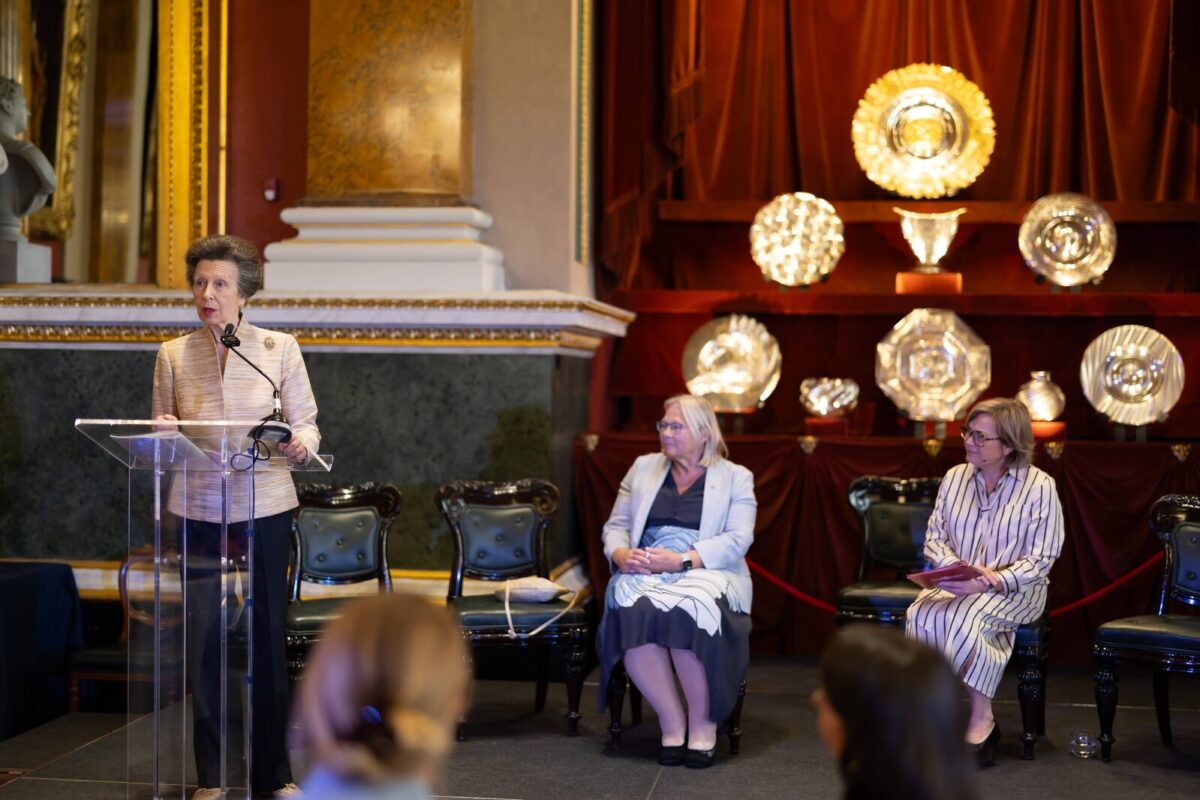How can we make sure every young person is able to participate and achieve in further education?

No 16-18 year old #LeftBehind, wherever they live: New publication recommends education and training policies for a growing cohort
Two of the UK’s leading educational charities, NCFE and Campaign for Learning, have come together to query exactly that in their new pamphlet, titled ‘No 16-18 Year Old Left Behind’.
Featuring a collection of articles penned by ten leading authorities from across the education sector, including the Education Policy Institute, Association of Colleges, Learning and Work Institute and the Resolution Foundation, the paper offers policies and measures to help the new Government level-up education and training opportunities for all 16-18 year olds in England – so none are left behind – wherever they live.
The Spring Budget in March and Spending Review in the summer will be pivotal moments to see if the government will prioritise funding for the education and training of 16-18 year olds compared to other phases of the English system.
These will be against a background of reported 5% cuts in departmental spending and the apprenticeship budget facing overspend. The recent falls in the number of 16-18 year olds starting apprenticeships will also cause concern of a rise in the young people not in education, employment or training (NEET).
The authors call for a range of financial measures including:
- a fundamental review of the level of funding for the 16-18 phase;
- the funding of apprenticeships through the 16-18 participation budget and not the Levy;
- and the reintroduction of Educational Maintenance Allowances for young people in full-time education.
The articles also recommend education policies to help young people progress to Level 3 by age 19; and support 16-18 year olds for whom achieving Level 2 represents a real success including the 60,000 young people currently studying on apprenticeship programmes.
The authors are:
- David Laws
- Jan Atkinson and Nathan Nagaiah
- Catherine Sezen
- Kathleen Henehan
- Mark Dawe
- Susan Pember
- John Widdowson
- Kevin Gilmartin
- Clare Howard
- Joe Dromey, and
- Mark Corney
 Michael Lemin, policy and research manager at NCFE, commented:
Michael Lemin, policy and research manager at NCFE, commented:
“The population of 16-18 year olds in England is due to rise by over 200,000 by 2024. With the duty placed on all young people to participate in education and training until their 18th birthday, the new Government faces a crucial challenge to ensure that no 16-18 year old is left behind.
“The contributions in the pamphlet shine a light on this complex subject that has the potential to impact so many and we thank the authors for their expert opinions.”
 Julia Wright, national director at Campaign for Learning said:
Julia Wright, national director at Campaign for Learning said:
“We hope the pamphlet opens up a wider debate on whether the best way to help young people achieve in the 2020s is through more of the same – namely a further two years of full-time education. Education policies miss many of the 16-18 year olds who would benefit from them because they are not in the education system but in (or near) the labour market.”
No 16-18 Year Old Left Behind
 David Laws, Education Policy Institute, writing on helping every 16-18 year old to progress:
David Laws, Education Policy Institute, writing on helping every 16-18 year old to progress:
“There is a strong argument for a more fundamental review by policy makers of the level of funding by phase of education. At present – in spite of rhetoric to the contrary – the early years receive the lowest per student unit of funding.
“This then climbs through primary and secondary education, before falling in the post-16 phase, and then soaring post 18 (but particularly for higher education routes).”
 Jan Atkinson and Nathan Nagaiah, Shooters Hill Sixth Form College, writing on supporting young people to transition to ‘Level 3’ Academic and Vocational Courses:
Jan Atkinson and Nathan Nagaiah, Shooters Hill Sixth Form College, writing on supporting young people to transition to ‘Level 3’ Academic and Vocational Courses:
“Our experience at Shooters Hill Sixth Form College suggests that students with a Level 2 qualification but without a Grade 4+, maths GCSE can enrol on Level 3 programmes – except STEM subjects – and achieve them so long as a ‘targeted intervention support package’ is available to achieve a Grade 4 maths GCSE.”
Catherine Sezen, Association of Colleges, writing on the transition to ‘Level 3’ T levels:
“Greater funding to support more teaching hours and a richer experience to nurture social capital, flexibility in the English and maths qualifications to be undertaken and enabling a wider range of students at this level to benefit from a tailored study programme would no doubt support even more students to progress onto a T level or other Level 3 study.”
Kathleen Henehan, the Resolution Foundation, writing on the issues created by fewer Level 3 and Level 2 apprenticeships for 16-18 year olds:
“The transition from education to employment is, for some, increasingly fraught: even though employment is at a record high, recent Resolution Foundation research has shown that the proportion of 18-64 year-olds who have never held a job is, at 8.2 per cent, up 52 per cent since 1998 – a fact that cannot be explained simply by rising student numbers.
“Apprenticeships can provide young people with the skills development and work experience needed to keep them engaged in the labour market.”
 Mark Dawe, Association of Employment and Learning Providers (AELP), writing on ‘The Transition to ‘Level 3’ Advanced Apprenticeships’:
Mark Dawe, Association of Employment and Learning Providers (AELP), writing on ‘The Transition to ‘Level 3’ Advanced Apprenticeships’:
“As AELP has shown with its member surveys, opportunities are being severely limited by the shortage of non-levy apprenticeship funding and it is SME employers who have traditionally championed these cohorts.
“Worse still, apprentices aged 16 to 18 are the only learners in this age group not to benefit from the government funding ‘guarantee’, i.e. their training is not fully funded by the state.”
Sue Pember, HOLEX, writing on ‘Classroom Learning and Apprenticeships: A Twin Level 2 Offer for 16-18 Year Olds’:
“We need to restore a Level 2 offer in apprenticeships, and we need to safeguard the vocational Level 2 offer we currently have in all the key subjects.
“We should have a system which is built on what young people want and need – so for those who want a Level 2 apprenticeship there should be one out there and, for those who want to go to college to learn a new skill, they should have that option. “
John Widdowson, New College Durham, writing on ‘Entry and Level 1 Pathways for 16-18 Year Olds in FE Colleges’:
“Rather than place such students in a deficit position, requiring “remedial” attention and risking the reinforcement of failure, provision up to Level 1 should be seen as transformational rather than transitional, in most cases providing the stepping stone to higher level study and Apprenticeship rather than into low skill employment.”
Kevin Gilmartin, Association of College and School Leaders, writing on ‘A New Maths and English Policy for 16-18 Year Olds’:
“In 2019, just over a third of state-educated students did not score at least a grade 4 in both English and maths GCSEs. And crucially this will always be the case because of the system of ‘comparable outcomes’ which keeps results broadly stable from one year to the next.
“This meant that 170,000 post-16 students sat GCSE maths and 152,000 sat GCSE English across England. Unless policies change then, thousands of our young people will have to continue to endure their own Groundhog Day nightmare.”
Clare Howard, Natspec, writing on ‘Special Educational Needs Does Not End at 16’:
“The SEND reforms, combined with the raising of the participation age to the 18th birthday, mean that SEND provision does not end at 16. There are increasingly heavy demands on FE – the number of young people with Education, Health and Care Plans (EHCPs) aged 16 to 25 increased from 84,000 to 96,000 between 2018 and 2019.
Whether it is post-16 or post-18/19, the move into further education and training is arguably the least well-developed area of the SEND reforms.”
Joe Dromey, Learning and Work Institute, writing on ‘Counting the Costs: Fair Wages and Maintenance for 16-18 Year Olds’:
“If this new government is seeking to level up skills and opportunities across the country, to narrow entrenched inequalities and deliver opportunities for all, it should ensure that no young person is priced out of the education and training opportunity that is right for them.
“The new government should look across the piece at the barriers to participation, and develop a cross government strategy – with sufficient funding behind it – to ensure that all young people are able to take the path that is right for them.”
Mark Corney, Policy Consultant, writing on ‘Levelling-Up More 16-18 Year Olds’:
“If the new Government wants more young people from poorer households to achieve good passes in GCSE maths and English, Level 2 and Level 3 by age 19 it must recognise two points: first, the cost to poorer parents/guardians of keeping 16-18 year olds at home so they can participate in education, and secondly, 16-18 year olds from poorer households want money in their pockets to have some kind of life outside of education but do not have the bank of mum and dad to turn to.”
No 16-18 Year Old Left BehindThe Spring Budget in March and Spending Review in the summer will be pivotal moments to see if the government will prioritise funding for the education and training of 16-18 year olds compared to other phases of the English system. These will be against a background of reported 5% cuts in departmental spending and the apprenticeship budget facing overspend. The recent falls in the number of 16-18 year olds starting apprenticeships will also cause concern of a rise in the young people not in education, employment or training (NEET). In this #No1618LeftBehind mini-series, leading authorities from across the education sector offer policies and measures to help the new Government level-up education and training opportunities for all 16-18 year olds in England: No 16-18 Year Old Left Behind – wherever they live. The authors are:
|











Responses